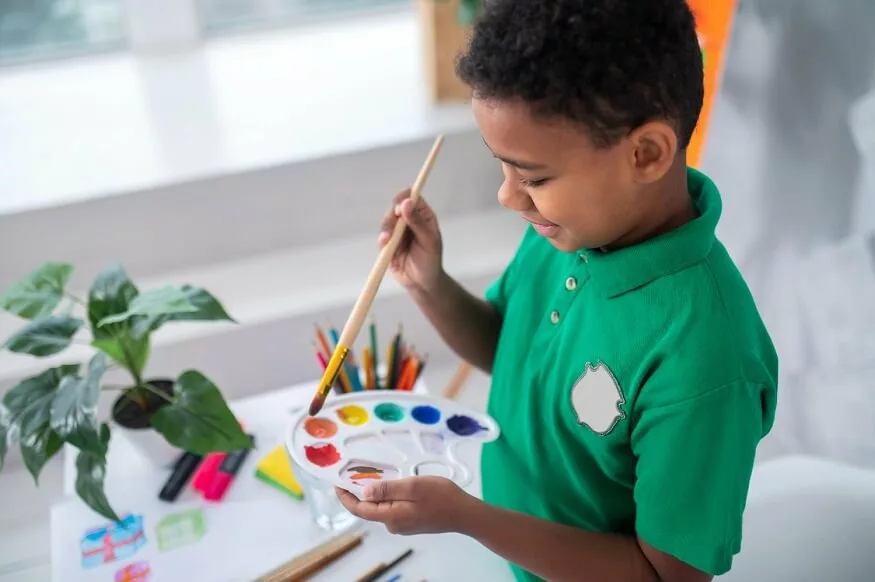Nurturing creativity and imagination in the classroom is essential for developing the holistic potential of students. In a world increasingly driven by innovation and novel solutions, equipping young minds with creativity skills is not just beneficial, but necessary. This guide delves into various strategies and practices that educators can implement to foster an environment conducive to the growth of creativity and imagination skills among students.
Understanding Creativity and Imagination
Before diving into the methods of nurturing creativity, it’s important to define what these terms mean in the educational context. Creativity is often described as the ability to generate new and original ideas, approaches, or solutions, while imagination is the capacity to form mental images or concepts of what is not physically present or has not been experienced directly. Together, they form a powerful duo that can drive innovation and problem-solving in numerous fields.
Also Read: How students can put up a skit performance
Strategies for Fostering Creativity and Imagination
Here are several strategies that can be employed to nurture these crucial skills:
- Incorporate Storytelling and Role-Play: Encourage children to create and share their own stories. This could be done through verbal storytelling, written narratives, or role-play activities. This approach not only enhances their creative thinking but also improves their language and communication skills.
- Provide Open-Ended Resources: Utilise materials that can be used in a variety of ways. Items like building blocks, art supplies, and recycled materials allow children to use their imagination to create something unique. This type of play encourages problem-solving and innovative thinking.
- Create an Inspiring Environment: The physical space of the classroom should be inviting and stimulate creativity. Displaying art, having a variety of colours, and providing different spaces for quiet reflection and collaborative work can all contribute to a creative atmosphere.
- Implement Inquiry-Based Learning: Encourage students to ask questions and explore topics that interest them. This approach promotes curiosity and independent thinking. Teachers can guide the inquiry process but should allow students the freedom to direct their own learning.
- Utilise Technology Wisely: While technology should not dominate the learning environment, it can be a powerful tool for creativity. Apps for drawing, music composition, and digital storytelling can open up new avenues for creative expression.
- Encourage Risk-Taking and Experimentation: Foster an environment where it’s safe to try new things and make mistakes. This can be done by praising effort and the creative process rather than just the end result. This approach helps to build resilience and a willingness to experiment.
- Integrate Arts Across the Curriculum: Incorporate art, music, drama, and dance into other subjects. This not only makes learning more enjoyable but also allows children to express understanding and ideas in diverse ways.
- Provide Time for Free Play: Allowing time for unstructured play is crucial. It gives children the opportunity to use their imagination and develop their own games and narratives without adult direction.
- Cultivate Mindfulness and Reflection: Teaching children mindfulness techniques can enhance their creative thinking. It helps them to clear their minds, focus, and be open to new ideas.
- Celebrate Creativity in All Forms: Recognise and celebrate all forms of creativity, not just traditional arts. This includes problem-solving, innovative thinking in science and mathematics, and creative writing.
By implementing these strategies, teachers can create an environment that not only fosters creativity and imagination but also supports overall child development and a love for lifelong learning.
Also Read: How Art Education Can Enhance Children’s Creativity
The Role of Educators in Nurturing Creativity
Educators play a pivotal role in nurturing creativity. It begins with acknowledging that every student possesses a unique set of creative abilities that can be developed. Teachers need to create a classroom environment that is not only safe for creative expression but also actively encourages it. This involves being open to new ideas, encouraging questioning, and viewing mistakes as learning opportunities rather than failures.
Here are some key roles educators play in this process:
- Creating a Supportive Environment: Educators are responsible for establishing a classroom atmosphere where creativity is encouraged and valued. This involves providing a space where students feel safe to express their ideas, take risks, and learn from failure without fear of judgement or negative repercussions.
- Providing Resources and Materials: Teachers should offer a range of materials and resources that inspire creative thinking. This could include art supplies, technological tools, diverse reading materials, and other hands-on resources that stimulate imaginative exploration.
- Facilitating Exploration and Inquiry: Educators should encourage students to explore, ask questions, and engage in inquiry-based learning. By guiding students to seek answers and explore various possibilities, teachers help develop critical thinking and problem-solving skills, which are essential components of creativity.
- Modelling Creative Thinking: Teachers can model creative thinking through their teaching methods, problem-solving approaches, and how they handle challenges. Demonstrating flexibility, open-mindedness, and a willingness to explore new ideas sets a powerful example for students.
- Encouraging Individual Expression: Each student is unique, and educators play a crucial role in recognising and nurturing individual talents and modes of expression. This might involve personalising learning experiences or providing different options for students to express their understanding and ideas.
- Integrating Cross-Disciplinary Learning: Creativity often thrives at the intersection of various disciplines. Educators can facilitate this by integrating arts, sciences, humanities, and technology in their teaching, thereby encouraging students to make novel connections and think in a holistic manner.
- Promoting Collaboration and Diversity of Thought: By encouraging collaborative work and valuing diverse perspectives, educators can enhance creative thinking. Group projects and discussions that involve sharing and refining ideas collectively can lead to more innovative and creative outcomes.
- Developing Emotional Intelligence: Part of nurturing creativity is helping students develop the emotional intelligence necessary to navigate the creative process. This includes skills like resilience, empathy, and self-awareness, which are vital for creative endeavours.
- Encouraging Reflection and Mindfulness: Mindfulness practices can also help clear mental clutter, leading to better focus and enhanced creativity.
- Celebrating Creative Efforts and Successes: Recognising and celebrating creative efforts, regardless of the outcome, reinforces the value of creativity and encourages students to continue engaging in creative activities.
Also Read: 10 Fun Ways To Train Your Childs’s Creativity
EuroSchool teachers foster creativity and imagination in the classroom by encouraging inquiry, integrating arts, providing diverse materials, and creating a supportive environment that celebrates each child’s unique creative expression.










